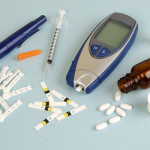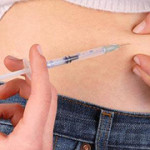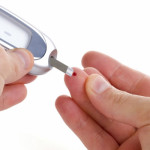Need To Know About Taking Control Of Diabetes
Good health is a fine balancing act that involves a range of bodily systems and functions. If something goes wrong with one of these systems, poor health can result. In some cases, the condition can be serious – even life-threatening.

The American Diabetes Association’s most recent set of statistics, for 2012 (compiled in 2014), shows that more than 9% of the population has diabetes, but up to 25% are not diagnosed.
More than 25% of seniors over 65 have diabetes.
In addition, over 86 million Americans have what is termed pre-diabetes, an increase of more than 14% since the previous statistics for 2010.
Hispanics and African-Americans are two to three times more likely than whites or Asians to develop diabetes.
Link for more information:
http://www.diabetes.org/diabetes-basics/statistics/
The more you learn about diabetes, the better you can learn how to prevent diabetes. Or, if you can’t prevent it, the better you can cope with the symptoms and avoid the many serious complications that can result from diabetes.
There are three main types of diabetes:

Type 1, Type 2, and gestational diabetes
The last one is diabetes which arises when a woman is pregnant.
Gestational diabetes can be treated like Type 1 diabetes.
Let’s look first at Type 1 diabetes.
What Is Type 1 Diabetes?
Type 1 diabetes is triggered when your immune system destroys cells in your pancreas called beta cells, which produce the hormone insulin. Type 1 diabetes is an autoimmune disorder; that is, your body is attacking itself and destroying its own tissue.
Secondary type 1 diabetes can occur when a virus or something else damages the insulin producing beta cells of the pancreas.
Type 1 diabetes used to be referred to as juvenile diabetes because it was most common in young people. However, anyone can develop secondary diabetes at any age.
In addition, children as young as toddlers have now been diagnosed with Type 2 diabetes, so it is important to get an accurate diagnosis as quickly as possible of which type of diabetes you or a loved one are suffering from in order to get the right treatment.
In the case of Type 1 diabetes, it is usually very obvious when someone is ill because there are clear signs and symptoms, some of which may manifest as a medical emergency due to hypoglycemia, that is, low blood sugar. The opposite is hyperglycemia, high blood sugar. It is important not to confuse these terms when dealing with diabetes.
Hypoglycemia, low blood sugar, is dangerous because the cells of your body need to use the food you eat as fuel. Insulin is an important hormone that helps move the sugar, or glucose, into your cells to keep you functioning normally. A lack of insulin can lead to collapse, diabetic coma, and in extreme cases, death.
Synthetic insulin is used to treat those with Type 1 diabetes.
Since those with Type 1 diabetes produce no insulin of their own, they need to get it through injection or another delivery method.
Many doctors recommend insulin pumps be implanted so the person with Type 1 diabetes will have a steady stream of insulin at all times. In this way they will not be affected badly if they do not take their insulin dose on time, or take an incorrect dose.
Pumps may be a good option for those who do not like to give themselves insulin injections. They are also a good solution for young people who might not be able to handle a complicated self-care routine by themselves.
Injectable insulin is the most common kind. Insulin types range from rapid-acting to long-acting, so it is important to pay attention to the treatment regimen your doctor prescribes.
Another option is inhaled insulin, though not enough research has been done on it as of yet to determine exactly how effective it is compared with other insulin delivery options.
The Symptoms of Type 1 Diabetes include:

* Always feeling thirsty
* Increased hunger, especially after eating
* Dry mouth
* Nausea and vomiting
* Pain in your belly
* Frequent urination
* Unexplained weight loss, even though you’re eating and feel hungry
* Fatigue (weak, tired feeling)
* Blurred vision
Signs of an emergency with Type 1 Diabetes include:
* Shaking and confusion
* Rapid breathing
* A fruity smell to your breath
* Pain in your belly
* Loss of consciousness, though this is rare
Type 1 diabetes is not currently preventable; however, there are many things you can do to properly manage it.
To appropriately manage your type 1 diabetes you need to follow your drug treatment plan, eat right, exercise, be vigilant about weight gain and avoid getting dehydrated.
If you get sick with flu or other common illnesses, you will also need to be extra careful, because nausea, vomiting, or not feeling like eating meals and/or becoming dehydrated can all lead to glucose imbalances.
If you suspect you or a loved one has type 1 diabetes, don’t delay in seeking treatment.
The sooner you start the appropriate treatment for diabetes the less likely you are to develop long term complications related to diabetes, such as neuropathy, kidney disease, eye disease, heart disease and strokes.
Now we will discuss Type 2 Diabetes.
What Is Type 2 Diabetes?
Type 2 diabetes used to be called adult-onset diabetes, but now that children as young as toddlers have been diagnosed with it, it is clear that it can happen at any age.
People with Type 2 diabetes produce the hormone insulin in the beta cells of their pancreas, but their cells are not able to use it as well as they should. This is termed insulin resistance. It can lead to a dangerous cycle of not being able to regulate the blood sugar as it goes higher and higher, a condition known as hyperglycemia.
There are a number of causes of Type 2 diabetes; the good news is that many of them are ones which you can control.
The following are the main causes of type 2 diabetes:
Genetic
It runs in family or there is an issue with your DNA that affects how your body makes insulin.
Being overweight or obese

Being overweight can cause insulin resistance, especially if you carry your extra pounds around the middle. Termed a “spare tire,” or “waist roundness” by doctors, this is a warning sign of Type 2 diabetes. Losing weight can help get your diabetes under control, or even reverse it.
Metabolic syndrome
People with insulin resistance often have a group of related health conditions which are collectively known as metabolic syndrome.
(Metabolic Syndrome includes the following conditions)
* High blood glucose
* Extra fat around the waist
* High blood pressure
* High cholesterol
* High triglycerides, part of your cholesterol count
Metabolic syndrome can be a sign that a person will develop diabetes if they do not get all of these factors plus their weight under control.
The good news is that all of these can be relieved to a large degree by smarter eating habits.
Fatty liver disease
A fatty liver is one with more than 10% of fat as part of its mass. The fat stops the liver from working properly.
Studies have shown that those with fatty liver are more likely to develop Type 2 diabetes within five years of being diagnosed than those with a normal liver.
Link for more information:
http://www.webmd.com/diabetes/news/20110225/fatty-liver-may-be-linked-to-diabetes-risk
There are two main types of fatty liver disease:
1. Alcoholic
2. Non-alcoholic.
Reversing fatty liver disease is possible by stopping alcohol consumption, losing weight, and watching your diet.
Damaged beta cells of the pancreas
If the cells that make the insulin send out the wrong amount of insulin at the wrong time, your blood sugar will get thrown off.
High blood glucose can damage these cells also, leading to a vicious cycle of the blood glucose getting higher and higher, and damaging more and more beta cells. Tight glucose control can help.
Bad signaling between cells
Sometimes cells send the wrong signals or don’t pick up messages correctly. If these problems affect how your cells make and use insulin or glucose, it can trigger diabetes. You may not be able to do much about this, but tight glucose control and eating a sensible diet will certainly help.
You may never know the exact cause of your diabetes, but your doctor will look at all of your test results to determine the underlying cause, if possible.
They will consider the most common risk factors and come up with a plan as to how you can stay in balance with diabetes, or even reverse it through lifestyle measures and good glucose control.
The symptoms of Type 2 diabetes can be similar to those of Type 1, but so mild you don’t always notice them. They don’t usually manifest as a medical emergency compared with Type 1 diabetes.
In fact, about 8 million people who have diabetes don’t know it and as mentioned earlier, more than 86 million people in the US are pre-diabetic.
It is important to note that women who have had gestational diabetes are two to three times more likely to get it during other pregnancies and at greater risk of developing Type 2 diabetes as they get older.
The most common symptoms of Type 2 diabetes are:
* Being very thirsty
* Urinating a lot
* Blurry vision
* Feeling tingling or numbness in your hands or feet
* Feeling tired all the time
* Getting cuts and scrapes that don’t heal well
* Yeast infections that you can’t get rid of
* Increasing frequency of erectile dysfunction
Type 2 diabetes may not show as a medical emergency, but it is a serious disease because it can lead to other serious health issues, including heart and blood vessel damage.
This can result in:
* Erectile dysfunction
* Amputation of toes, feet, legs and so on
* Kidney damage (diabetic nephropathy)
* Eye problems (diabetic retinopathy)
* Nerve problems (diabetic neuropathy)
* Serious infections even from simple wounds
Diabetes and its complications is the number seven cause of death in the US. It is the number two cause of limb amputation, after car and other serious accidents. Diabetes has a serious negative impact on quality and duration of life if you do not keep it under control.
Fortunately, there is a lot you can do to stay on top of your Type 2 diabetes, including deal with the risk factors we discussed above that are preventable.
There are a range of treatment options available as well, including insulin. Having said that, the good news is that not everyone with Type 2 diabetes needs to take insulin.
There is an ever-growing range of medications used to treat diabetes and control blood glucose, such as metformin, Actos, Januvia and Byetta.
Link – http://www.webmd.com/diabetes/diabetes-medications
To stay healthy if you have Type 2 diabetes, it is important to manage your diabetes well to avoid complications.
Some of the best ways to manage type 2 diabetes are:
* Take your diabetes medications or insulin on time
* Check your blood glucose levels regularly and map them on a chart
* Eat right
* Don’t skip meals
* Keep track of what you eat and map it against your chart
* Follow the dietary guidelines you will be given by the doctor
* See your doctor regularly to check for early signs of any serious side effects
* Exercise according to the guidelines your doctor will give you
* Stop smoking – it will improve circulation to help you avoid diabetes-related amputations
* Lose weight – some studies have shown that shedding as little as 20 pounds can actually reverse diabetes.
Now that you know the most important facts in relation to Type 2 diabetes, it’s time to compare them side by side.
Comparison of Type 1 and Type 2 Diabetes
Key Differences:
There are several key differences between the two main types of diabetes that it is important to be familiar with.
Here is a summary of what you need to know.
1. Type 1 Diabetes

* An autoimmune disorder – This form of diabetes is an autoimmune disorder, that is, the body destroying its own organs and tissues.
* An emergency – People often seek medical help because they are seriously ill from sudden symptoms of low blood sugar.
* Hypoglycemia is a serious risk – low blood sugar is often the main issue.
* Insulin is essential for managing this condition safely. Many will be offered an insulin pump to try to keep blood glucose levels steady and reduce the risk of wrong doses or missed doses.
* Can’t be prevented.
* Usually shows up in young people, which is why it used to be referred to as juvenile diabetes.
* Can sometimes be triggered in a person of any age due to a severe virus.
2. Type 2 diabetes
* Type 2 used to be known as adult-onset diabetes, but it has now been diagnosed in children as young as toddlers.
* Not an emergency – most people do not have symptoms before it is discovered.
* Main issue is hyperglycemia, whilst Type 1 manifests as low blood sugar (hypoglycemia). In most cases, Type 2 will cause issues due to hyperglycemia, high blood sugar. The only exception will be if a Type 2 diabetic become hypoglycemic because they are not taking their medications correctly.
* Insulin – Some use insulin, but it is not essential compared with Type 1.
* Other drugs – There is currently a wide range of drugs available for dealing with blood glucose that do not involve insulin.
* Regular testing will be required to stay in balance.
* Can be prevented through healthy lifestyle choices. In some cases, it can even be reversed, such as through weight loss and a proper diet and regular exercise.

These are the main differences between the two, but it is important to note the primary similarities as well.
All types of diabetes greatly increase a person’s risk of a range of serious complications. Although monitoring and managing the disease can prevent complications, diabetes remains the leading cause of blindness and kidney failure.
It also continues to be a critical risk factor for heart disease, stroke, and foot or leg amputations.
Now that you know how the three types of diabetes are similar and different, let’s look at effective self-care when you have diabetes.
Effective Self-Care When You Have Diabetes
As we have discussed, effective self-care is the foundation for staying health no matter what type of diabetes you have.
Monitoring

1. Monitor your blood glucose at least three times a day
2. Keep track of your readings on a chart
3. Take your insulin and all medications on time
4. Know exactly what each medication is and what it is supposed to do
5. Make sure you know the potential side effects of each medication
6. Discuss any questions or concerned with your doctor
7. Don’t forget to mention any other medications you might be taking, such as:
* Over-the-counter medicines
* Prescription drugs
* Vitamins and minerals
* Herbal/natural remedies
Many of these can interact with diabetes medications.
Diet

* Follow your eating guidelines carefully
* Monitor what you eat, such as in a journal
* Cook more yourself – avoid restaurants, takeaway and convenience foods
* Eat more fiber in vegetables and salads
* Steer clear of empty calories, soda, juice, cookies
* Eat fruit in moderation; use as a dessert
* Learn a range of recipes for diabetics you can cook ahead and freeze so you always have safe, sensible choices you can take with you anywhere and eat any time you need a meal or healthy snack
Exercise and Fitness
* Exercise regularly
* Avoid injury such as blisters
* Lose weight
* Take care of your overall health – watch out for colds and flu
* Beware of any infections if you can’t seem to shake them
Consider Natural Treatments
Some of these natural remedies can be used safely in addition to your medications and other effective self-care options. Steer clear of anything that promises a diabetes “cure.” Always discuss any options you are considering with your doctor first.
For complementary medicine, suggested herbs that have been studied and shown to be effective in relation to blood glucose control include:
* Bitter melon
* Cinnamon
* Turmeric
* Fenugreek
* Aloe
Aromatherapy
These essential oils may not help blood glucose issues but they can be helpful in relation to skin conditions:
* Lavender
* Sandalwood
* Tea tree
Link for more information:
Aromatherapy – http://spectrum.diabetesjournals.org/content/14/3/124.full
Skin conditions – http://spectrum.diabetesjournals.org/content/14/3/124/T1.expansion.html
And these essential oils can help for stress relief, which can help maintain overall wellness:
* Lavender
* Rose
* Geranium
Link for more information:
http://spectrum.diabetesjournals.org/content/14/3/124/T3.expanson.html
Stress Relief
These methods can be very helpful in relieving stress:
* Meditation
* Biofeedback
* Journaling
* Joining a diabetes support group
* Getting counselling
* Massage therapy
These can other be done at home on your own, or using coverage provided by many health insurance plans.
Dealing with Depression/Anxiety
Many people diagnosed with a severe illness might develop depression, thinking nothing will ever be the same again.
Up to 75% of seniors with a serious medical condition can also suffer from depression.
A new diagnosis can also trigger worry and anxiety about what will happen next, worst-case scenarios, and more.
Seek help if you develop a mood disorder. Honest discussions with your health care providers, counselling, and/or joining a support group (in-person or online) can all help.
Education and Research
Above all, learn all you can about diabetes in order to discover what to look out for in relation to potential complications, so you can stay fit and well as long as possible despite your condition, or perhaps even reverse it.
Use the free resources available online from reputable sites to find recipes, eating plans and more. You can also connect with others who have diabetes so you can share information with them about what has worked well and what you might be struggling with.
Getting diagnosed with diabetes may make you feel as though you are the only person in the world that this has happened to. Unfortunately, you are one amongst millions with diabetes, and that number is growing all the time.
Knowledge is power, so learn all you can about your type of diabetes and follow through with action steps that will keep you safe and well for as long as possible.
Conclusion
The three kinds of diabetes can have a significant impact on your health if you do not take steps to keep your blood glucose under control according to the guidelines your doctor will give you.
There may not be much you can do about Type 1 diabetes, but good eating habits, keeping your weight down and exercising regularly can help with all three forms of diabetes.
Above all, monitor your blood glucose no matter which type of diabetes you have. Take your insulin or other medications as needed to avoid hypo-or hyper-glycemia, and see what a difference it can make to your health.